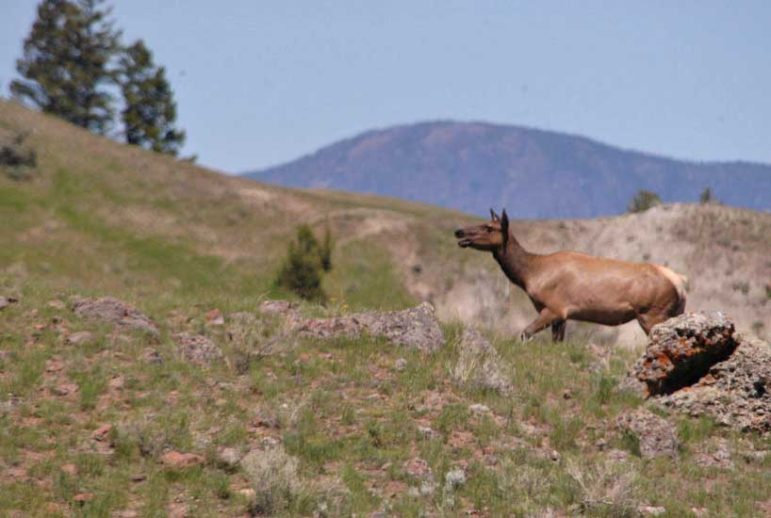
Elk and other wildlife are moving along spring migration routes around Grand Teton National Park and nearby areas.
Wildlife have begun their annual migration from wintering areas toward summer ranges located in Grand Teton National Park. Because spring migration appears to be fully underway, motorists are advised to drive with extra caution during the coming weeks, and be alert for animals wandering near park roadways, especially Highway 26/89/191 (Hwy 89) and the Antelope Flats/Kelly scenic loop roads.
Early this week, elk started to drift north from the National Elk Refuge. With the receding snowpack, elk have fanned out across the sagebrush flats north of the Gros Ventre River, according to a statement released by the park’s public affairs office.
Elk can be found scattered across this broad area; some have bunched up near Hwy 89 before crossing the roadway. In addition, several moose are roaming the sage flats between the Gros Ventre Junction and Moose Junction. A group of six to seven moose are lingering near Hwy 89 as they browse both sides of the roadway, especially near Airport Junction and Sleeping Indian Turnout. Bison and mule deer will soon make their transition from wintering areas to summer ranges, as well.
A number of moose are struck by vehicles each year—and often killed—on Hwy 89 just south of Moran Junction in an area of dense willows near the confluence of the Snake River and Buffalo Fork River. This section of highway carries a 45 mph speed limit day and night. A nighttime speed limit of 45 mph is also posted for the entire length of Hwy 89 within Grand Teton because animals tend to move during low light conditions and are generally most active between dusk and dawn. Lower speed limits are posted in an effort to slow drivers and reduce vehicle-wildlife collisions.
Motorists are required to drive the posted speed limit and advised to be alert for animals that cross roads unexpectedly. Driving slower than indicated speed limits—especially at night—can increase the margin of safety. Collisions between motor vehicles and wildlife may result in severe damage to the vehicle, serious or fatal injuries to occupants of that vehicle, and/or death for the animal involved.
Animals are often weakened from the rigors of a Jackson Hole winter and they may be forced to use precious energy whenever startled or disturbed by vehicles and humans on foot or bicycle. Park visitors and local residents should keep their distance from ALL wildlife, maintaining a distance of 100 yards from bears or wolves and 25 yards from other wildlife, including nesting birds.
Public closures are now in effect near sage grouse leks (mating grounds) throughout the park to protect grouse during a vulnerable time of year. Anyone visiting these locations must obey the posted closures to reduce disturbance to sage grouse on their seasonal mating areas.
